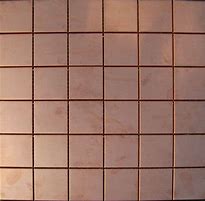**Beneath Your Feet: The Hidden World of Home Copper Water Pipes**
(What Is The Underground Copper Water Pipe Size On Residential Homes)
Ever wonder what’s hiding under your lawn or driveway? While you walk across your yard, a network of copper pipes quietly does its job, delivering water to your home. These underground pipes are like silent heroes, built to last decades. But their size matters more than you might think. Let’s dig into the world of residential copper water pipes and why their dimensions are a big deal.
Copper pipes have been a favorite for homes since the mid-1900s. They’re tough, resist corrosion, and don’t mind extreme temperatures. But before you picture giant tubes, remember most home systems use pipes no wider than a couple of inches. The size depends on what the pipe needs to do. For example, the main line bringing water into your house is thicker than the ones feeding your bathroom sink.
A typical home uses copper pipes sized between ½ inch and 1 inch in diameter. The ½-inch pipe is common for faucets and toilets. It’s slim but gets the job done for low-demand spots. The ¾-inch pipe handles bigger jobs, like supplying water to the whole house or connecting to appliances like washing machines. In older homes, you might even find 1-inch pipes, especially if the house was built when water pressure systems were less advanced.
Why not just use the biggest pipe possible? Think of water flow like traffic. A narrow road works for a few cars, but rush hour needs a highway. Pipes work the same way. Too small, and water pressure drops. Too big, and you waste money on materials and risk slower flow speeds. Builders pick sizes based on the home’s needs. A family of five might need bigger pipes than a studio apartment.
Local building codes also play a role. Cities or towns often set rules for pipe sizes to ensure safety and efficiency. For example, colder regions might require deeper burial of pipes to avoid freezing. The standard depth is usually 12 to 18 inches below the frost line. But codes vary, so a house in Florida won’t need the same setup as one in Minnesota.
Ever notice how water pressure changes when two showers run at once? That’s your pipes’ size talking. If the main line is too narrow, pressure drops when multiple taps are on. Upgrading to a ¾-inch pipe can fix that. But swapping sizes isn’t simple. It means digging up old lines, which costs time and money. That’s why planning ahead during construction or major renovations is key.
Copper isn’t the only option today. Materials like PVC and PEX have grown popular for being cheaper and easier to install. But copper still wins for longevity. A well-installed copper pipe can outlive the house it’s buried under. It also doesn’t leak chemicals into water, which matters for families prioritizing safety.
Fun fact: The switch from ¾-inch to ½-inch pipes for branch lines started in the 1960s. Builders realized smaller pipes saved money without sacrificing performance. Now, ½-inch copper is the go-to for most interior plumbing.
When installing or repairing underground copper pipes, always check for local guidelines. Use type K or L copper, which are thicker and designed for burial. Wrap them in protective tape to guard against soil acidity. And if you’re unsure about sizes, ask a plumber. They’ll calculate the right diameter based on your home’s layout, fixtures, and water demand.
(What Is The Underground Copper Water Pipe Size On Residential Homes)
So next time you turn on the tap, remember the hidden copper maze beneath your home. Its size might seem minor, but it’s a carefully chosen detail keeping your daily life flowing smoothly.
Inquiry us
if you want to want to know more, please feel free to contact us. (nanotrun@yahoo.com)



